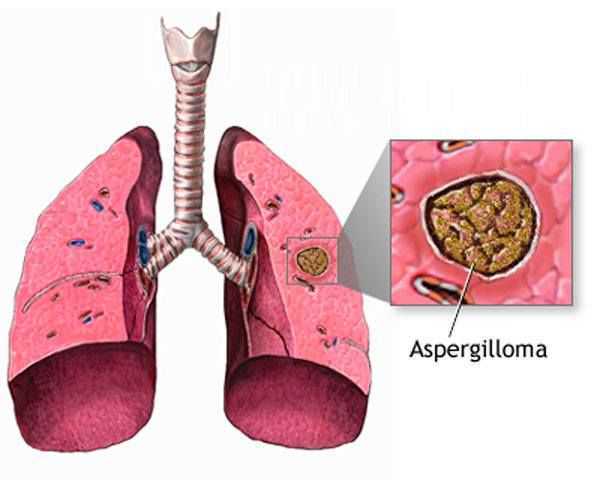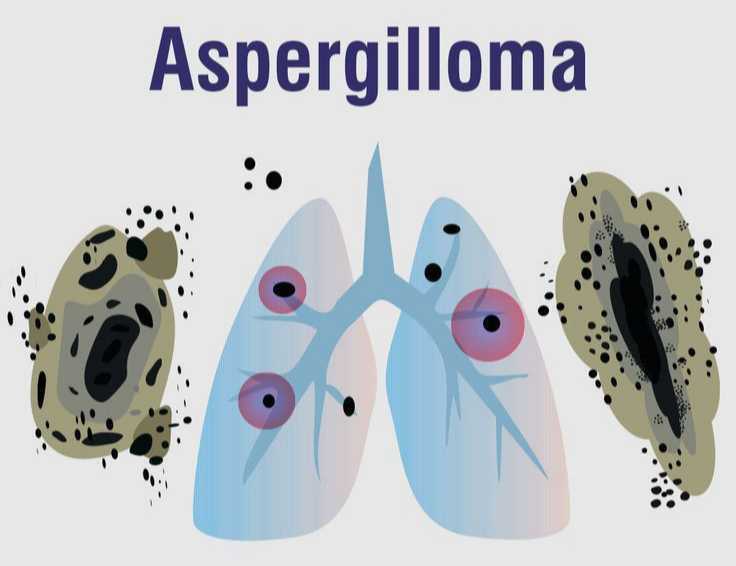Dr. Belal Bin Asaf
Thoracic (Chest) Surgeon
Director, Institute of Chest Surgery,
Chest Onco-Surgery & Lung Transplantation, Medanta Hospital

Dr. Belal Bin Asaf
Thoracic (Chest) Surgeon
Director, Institute of Chest Surgery,
Chest Onco-Surgery & Lung Transplantation, Medanta Hospital

An aspergilloma, commonly called a fungal ball, is a clump of fungus (Aspergillus fumigatus) that develops inside a pre-existing cavity in the lung. These cavities often result from diseases like tuberculosis (TB), sarcoidosis, bronchiectasis, or old lung abscesses.
While aspergilloma itself does not always invade healthy lung tissue, its presence can lead to severe complications such as massive hemoptysis (coughing blood), making early diagnosis and timely treatment essential.
Aspergillomas occur when fungal spores of Aspergillus settle and grow inside lung cavities. Over time, these spores form a tangled ball of fungal filaments, mucus, inflammatory cells, and tissue debris.


Symptoms vary depending on the size of the fungal ball, location, and whether bleeding occurs.
Common symptoms include:
Importantly, some patients may remain asymptomatic until a major episode of hemoptysis occurs, making regular follow-up critical.
The fungal ball lies freely within the cavity but can irritate and erode the thin-walled blood vessels around it. Over time, these vessels (particularly branches of the bronchial arteries) become inflamed and fragile.
When they rupture, patients experience coughing blood. In severe cases, bleeding can be massive and life-threatening, leading to suffocation, aspiration, or shock.
This is why any patient with aspergilloma and hemoptysis needs urgent evaluation by a thoracic surgeon.
Diagnosis is usually made through a combination of clinical history, imaging, and microbiological studies.
Surgery is the gold standard for treating localized aspergilloma, especially when hemoptysis is present. By removing the part of the lung containing the fungal ball, the source of bleeding is eliminated permanently.
When Should Surgery Be Considered?
Patients with poor lung reserve or multiple cavities may not be suitable surgical candidates and may require individualized management.
How Surgery Helps in Localized Aspergilloma
Surgery vs. BAE– Why Surgery is Superior
| Aspect | Surgery | BAE |
|---|---|---|
| Control of Bleeding | Permanent | Temporary |
| Recurrence Rate | Very Low | High (40–60%) |
| Definitive Cure | Yes | No |
| Suitability | For localized disease in fit patients | Emergency/poor surgical candidates |
Thus, surgery remains the best option in patients who can safely undergo it.
Surgical Modalities for Aspergilloma
Prognosis After Surgery
With proper patient selection, surgical outcomes are excellent. Most patients experience:
Mortality and complication rates are higher than for some other lung surgeries due to adhesions and fragile vessels, but in experienced centers, surgery remains safe and highly effective.
Key Takeaways
If you or your loved one has been diagnosed with Aspergilloma or are experiencing coughing of blood, seek expert evaluation immediately. Dr. Belal Bin Asaf specializes in advanced thoracic surgery, including minimally invasive and robotic procedures for aspergilloma, ensuring safe and effective treatment.
Still have questions about Aspergilloma and its treatment? Book a consultation with Dr. Belal Bin Asaf, one of India’s leading thoracic surgeons, for expert advice and personalized care.